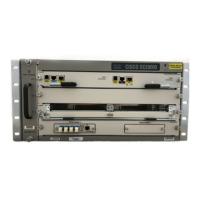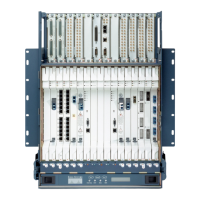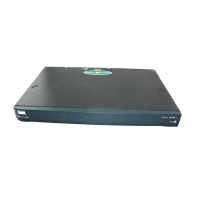5-38
Cisco SCE8000 Software Configuration Guide, Rel 3.1.6S
OL-16479-01
Chapter 5 Configuring the Management Interface and Security
Configuring Time Clocks and Time Zone
Configuring Time Clocks and Time Zone
• Displaying the System Time, page 5-38
• Displaying the Calendar Time, page 5-39
• Setting the System Clock, page 5-39
• Setting the Calendar, page 5-39
• Setting the Time Zone, page 5-40
• Removing the Current Time Zone Setting, page 5-41
• Configuring Daylight Saving Time, page 5-41
The SCE platform has three types of time settings, which can be configured: the clock, the calendar, and
the time zone. It is important to synchronize the clock and calendar to the local time, and to set the time
zone properly. The SCE platform does not track Daylight Saving Time automatically, so you must update
the time zone when the time changes bi-annually.
The SCE platform has the following two time sources:
• A real-time clock, called the calendar, that continuously keeps track of the time, even when the SCE
platform is not powered up. When the SCE platform reboots, the calendar time is used to set the
system clock. The calendar is not used for time tracking during system operation.
• A system clock, which creates all the time stamps during normal operation. This clock clears if the
system shuts down. During a system boot, the clock is initialized to show the time indicated by the
calendar.
It does not matter which clock you set first, as long as you use the clock and calendar read commands to
ensure they are synchronized.
The time zone settings are important because they allow the system to communicate properly with other
systems in other time zones. The system is configured based on Coordinated Universal Time (UTC),
which is standard in the industry for coordination with other manufacturers’ hardware and software. For
example, Pacific Standard Time would be written as PST-10, meaning that the name of the time zone is
PST, which is 10 hours behind Universal Time.
When setting and showing the time, the time is always typed or displayed according to the local time
zone configured.
Displaying the System Time
Step 1 From the SCE(config)# prompt, type show clock and press Enter.
Displaying the System Time: Example
The following example shows the current system clock.
SCE#show clock
12:50:03 UTC MON November 13 2001
sce#

